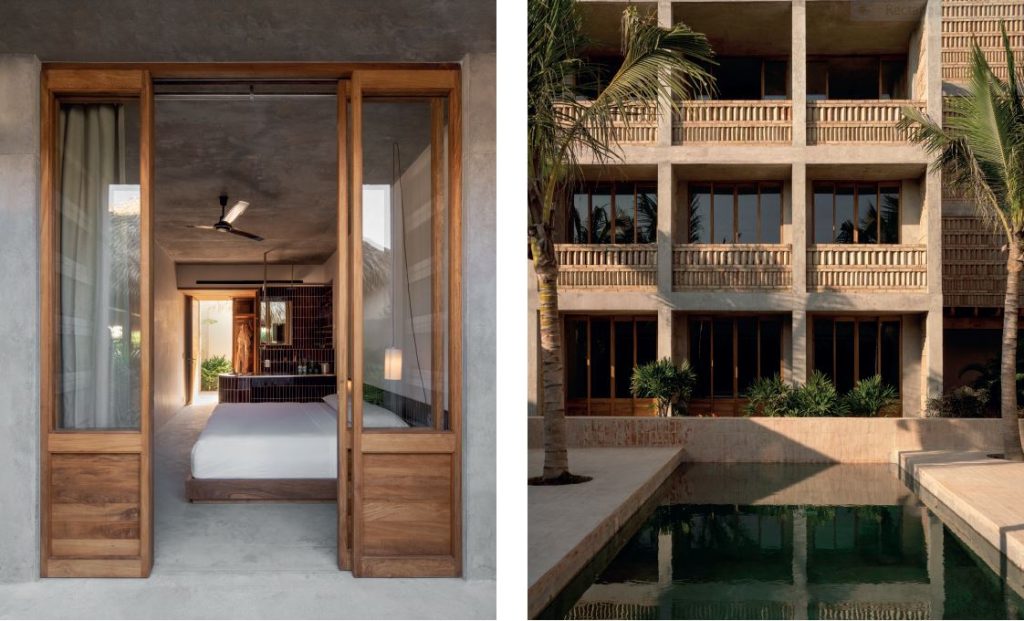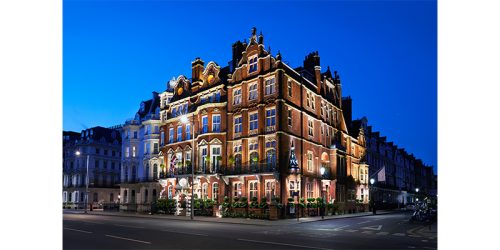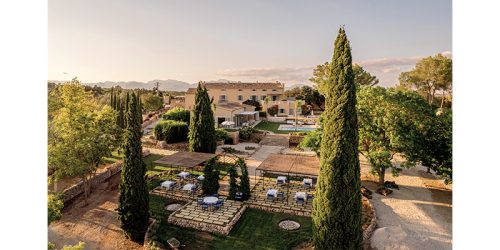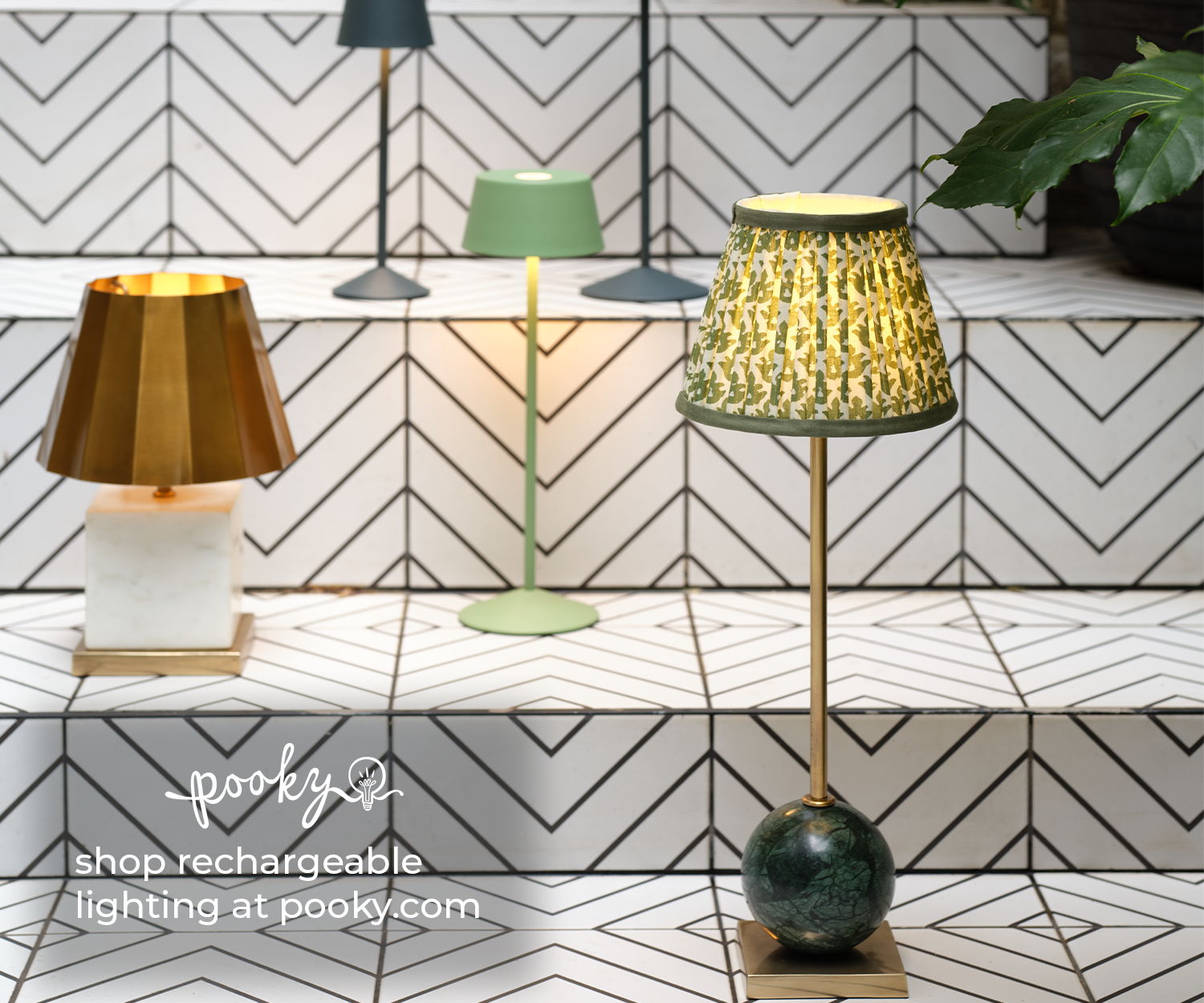Hotel Humano, Puerto Escondido, Mexico
Grupo Habita offers barefoot luxury at surfers’ paradise.
Steps away from world-renowned Zicatela Beach, the brand-new Hotel Humano by Grupo Habita is a laid-back luxury destination rooted in the rhythm of the surrounding community. Located on a pedestrian-only street in La Punta Zicatela, Puerto Escondido, the hotel is designed for rest, reconnection, and immersion into the local surf culture and natural environment.
 The latest addition to Grupo Habita’s portfolio – whose nearby properties Hotel Escondido and Hotel Terrestre are benchmarks of lifestyle hospitality in Mexico – Humano brings an unpretentious, earthy energy to the coast. The vision: barefoot luxury, designed for young, conscious travellers eager to embrace surfing and local life.
The latest addition to Grupo Habita’s portfolio – whose nearby properties Hotel Escondido and Hotel Terrestre are benchmarks of lifestyle hospitality in Mexico – Humano brings an unpretentious, earthy energy to the coast. The vision: barefoot luxury, designed for young, conscious travellers eager to embrace surfing and local life.
The buildings are made primarily of concrete, clay tiles, bricks and tropical wood, while the lobby’s double-height ceilings give way to latticed structures by Adolfo Sánchez Rojas that merge the interior and exterior. Custom dark-orange, off-white and wine-coloured textiles, including quilts by Reina Silva at the studio Dushill, as well as screens, doors and furniture crafted from tropical woods by Javier Gómez, exude a warmth that is complemented by indirect lighting. With entirely bespoke and locally crafted furnishings, each space captures the essence of Oaxaca, generating a contemporary design while embracing and honouring the region’s artisanal techniques.

Hotel Humano, Puerto Escondido, Mexico. The hotel is designed for rest, reconnection, and immersion into the local surf culture and natural environment. Images courtesy of Grupo Habita
That ethos is evident in every part of the project, which came to life through close collaboration between Grupo Habita and architect Jorge Hernández de la Garza. Complementing this architectural vision, the hotel’s brand identity was brought to life by Ciao Lobby, a hospitality creative studio that wove the local culture and lifestyle into the graphic and experiential design, ensuring every detail resonates with the destination’s unique charm. Responsible for the interior design was Madrid-based design studio Plantea Estudio.
Throughout the structure, passive cooling and openness were guiding principles, resulting in brick latticework, deep-set terraces, and cross-ventilation that negates the need for excessive climate control.
“We worked hand in hand with the Habita team,” says Louis Gil Guinea, Co-Founder of Plantea Estudio, “and we have a special gratitude towards Carlos and Moises, who were extremely supportive and offered extraordinary counsel.”
The design brief was to create a relaxed atmosphere grounded in local tradition yet attuned to contemporary sensibilities. “That is what we tried to create with our design,” Gil Guinea explains, “with a project based on clay – both natural and coloured, local woods, bespoke concrete pieces, all combined with stainless steel elements.”

The design brief was to create a relaxed atmosphere grounded in local tradition yet attuned to contemporary sensibilities.
The buildings themselves reflect that ethos, with the humble yet confident material palette. Throughout the structure, passive cooling and openness were guiding principles, resulting in brick latticework, deep-set terraces, and cross-ventilation that negates the need for excessive climate control.
“The best sustainability comes from not pretending perfect isolation,” says Luis Gil Guinea, “but only tempering the natural conditions to a good point.”

While the exterior holds a bold, almost brutalist quality, the interiors were thoughtfully softened to feel tactile and welcoming.
“It is a simple, timeless, and austere construction, but carefully designed,” he explained. “For us, there’s no need to soften the character of the building in its larger scale, just in the things the guest touches. The furniture, lamps, bed linens, curtains, towels, cushions… these are all manufactured or selected with care, so the guest feels at home in this ‘primitive cave’ that gets him in direct touch with the surrounding nature.”
Throughout the hotel’s 39 rooms – including eight suites – spaces for sleeping, bathing and relaxing are subtly defined by freestanding walls and curtains. Toilets are tucked into private cubicles, while a repetition of materials – like handmade wine-coloured tiles from San Pedro Ceramics – connects the washbasin, mirror units and bed headboards. Adding further texture and a touch of whimsy are original artworks by Mexico City–based artist Lucio Muniain.
The human hand is present in every corner. Nearly all furnishings were custom-made by local craftspeople. “We worked along with local fabric producers in Ciudad de México and Oaxaca, local carpenters, artisanal tile makers from Jalisco, and the on-site stone masons for numerous handmade concrete pieces, so very important for the ‘ready-made’ atmosphere,” Gil Guinea explains. “Common, simple geometric designs, objects as a piece of art if well composed. Working with Jorge we gave them specific designs but also listened to their experience. As it must happen in something made by people for people, not by companies for impersonal clients. It has some imperfections, but it breathes humanity.”
The project unfolded quickly: interior design began in late 2023 with the structure already in place, and the hotel officially opened in December 2024. “During that time, the teamwork brought about by architect Jorge Hernández de la Garza, project manager Tomás Garzón and Habita has been the key to the success and was very much a learning process for us too.”

Outside, a large courtyard pool is flanked by lush vegetation, sun loungers, and an alfresco restaurant.
A rooftop garden, massage space, sauna and cold plunges add to the sense of relaxed wellbeing, while the upcoming Beach Club promises oceanfront bungalows, a grill restaurant, and hammock-strewn sundecks facing the Pacific.
Zicatela – often called the Mexican Pipeline – remains a magnetic draw for professional surfers and laid-back beachgoers alike, while the local neighbourhoods, restaurants and streets of La Punta are seamlessly connected to the hotel via its permeable façade.
If ever there were a place where guests and locals could kick off their sandals and share in the spirit of slow living, Hotel Humano is it.










